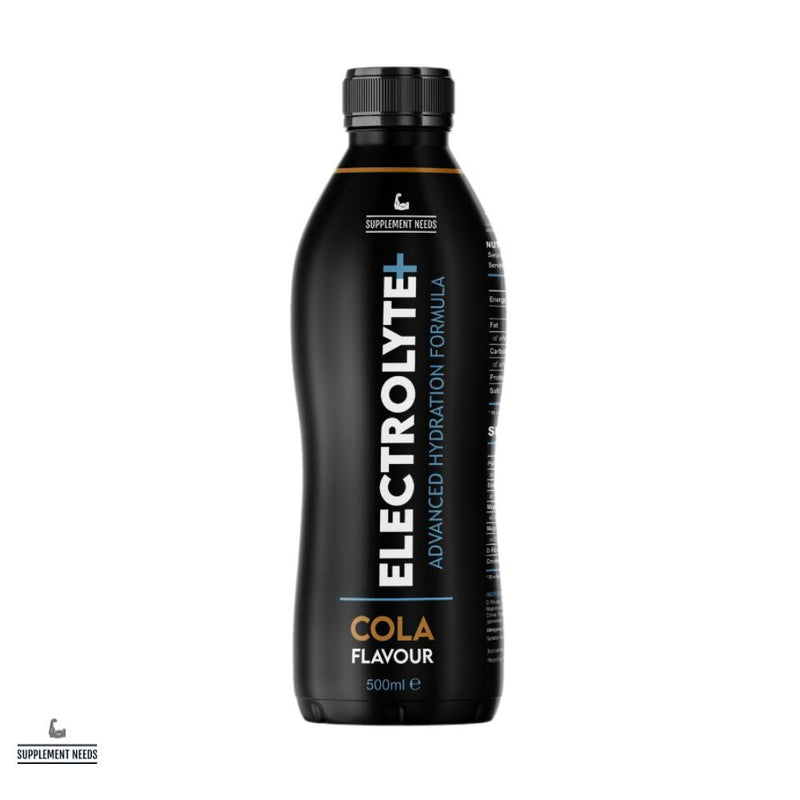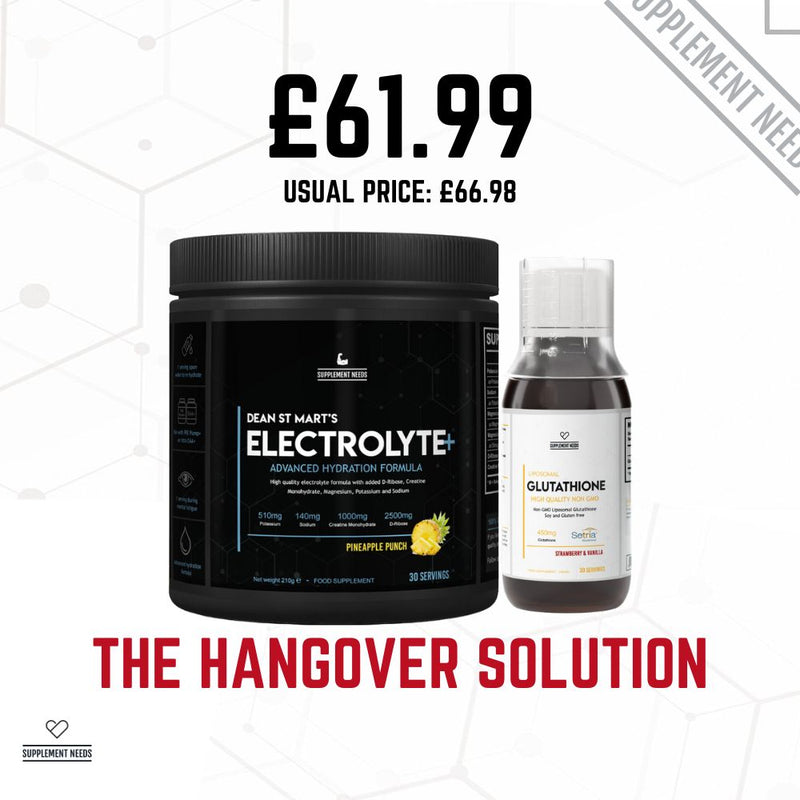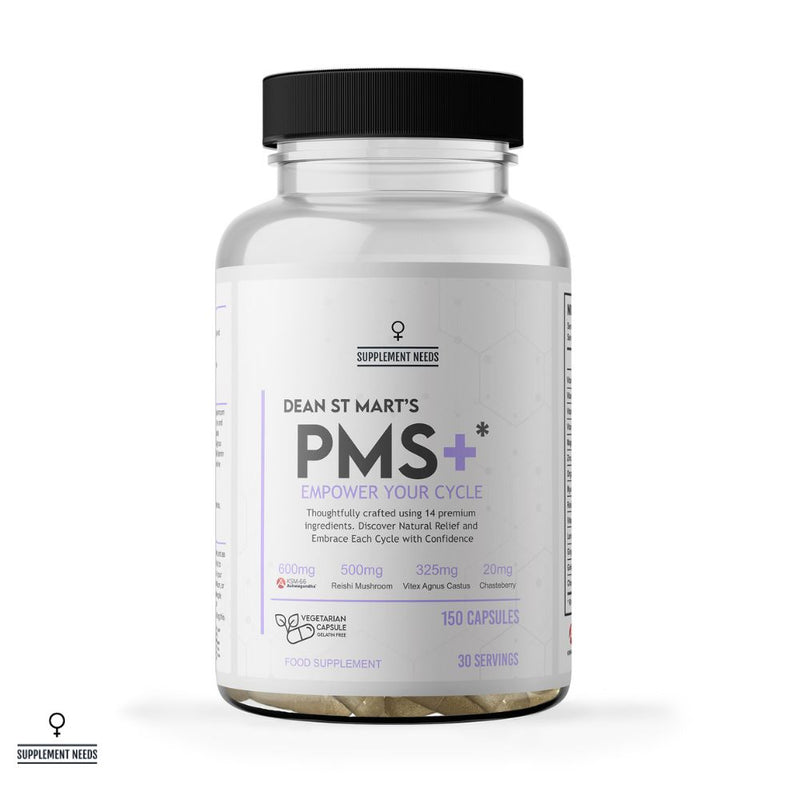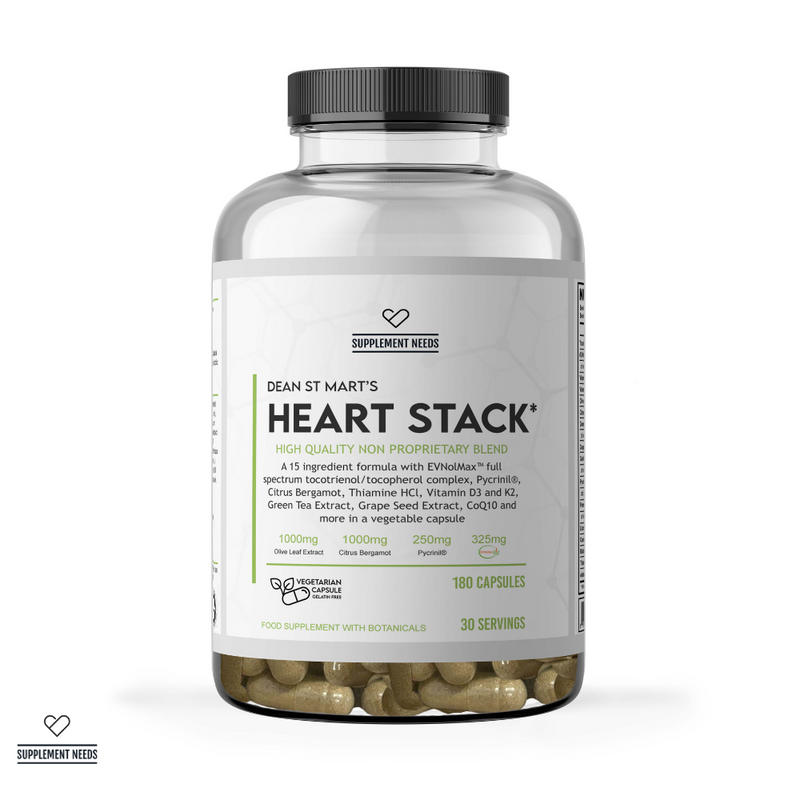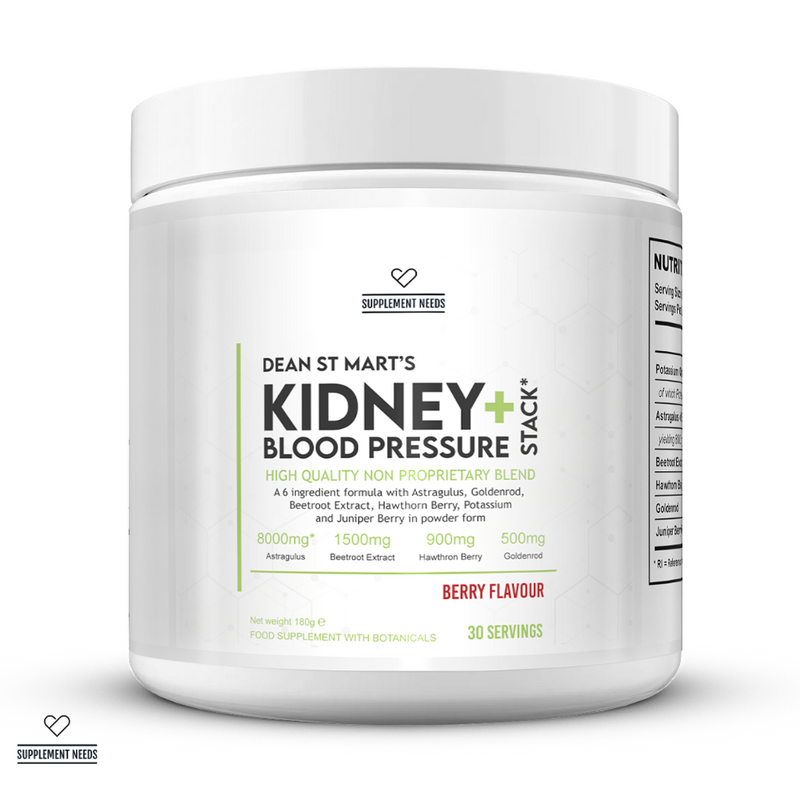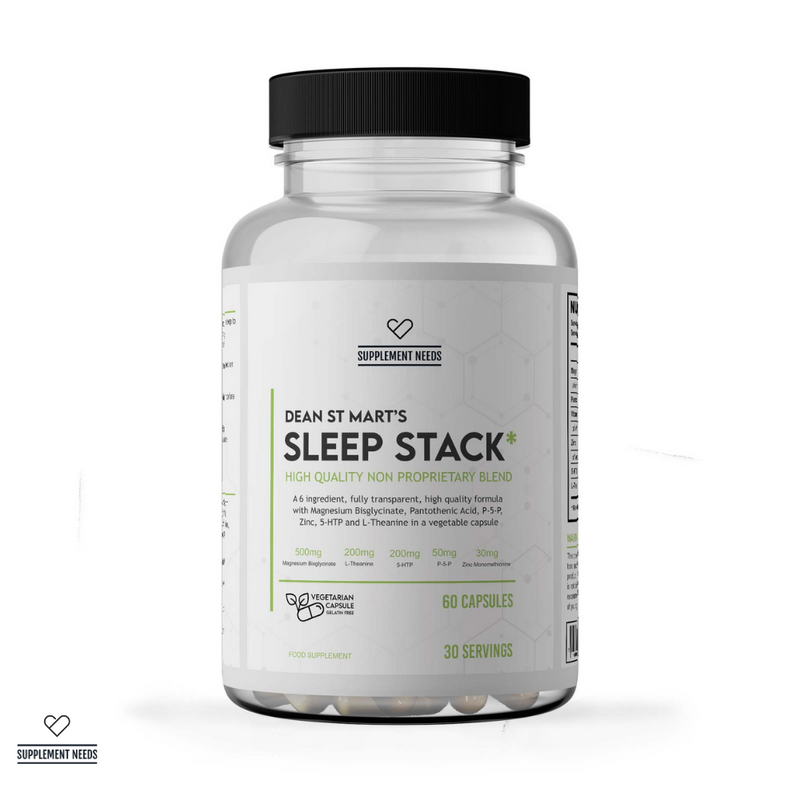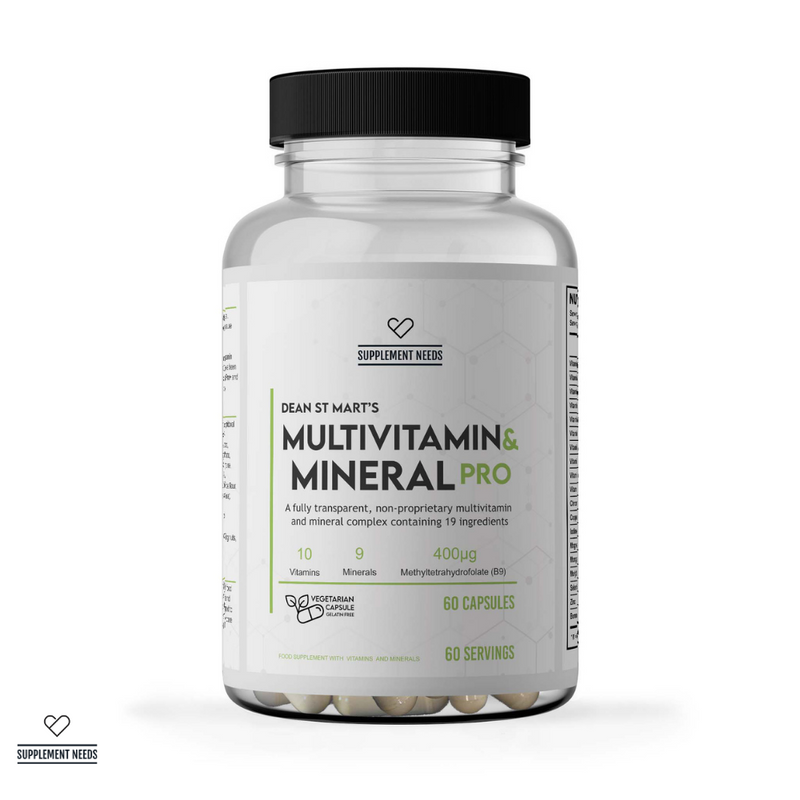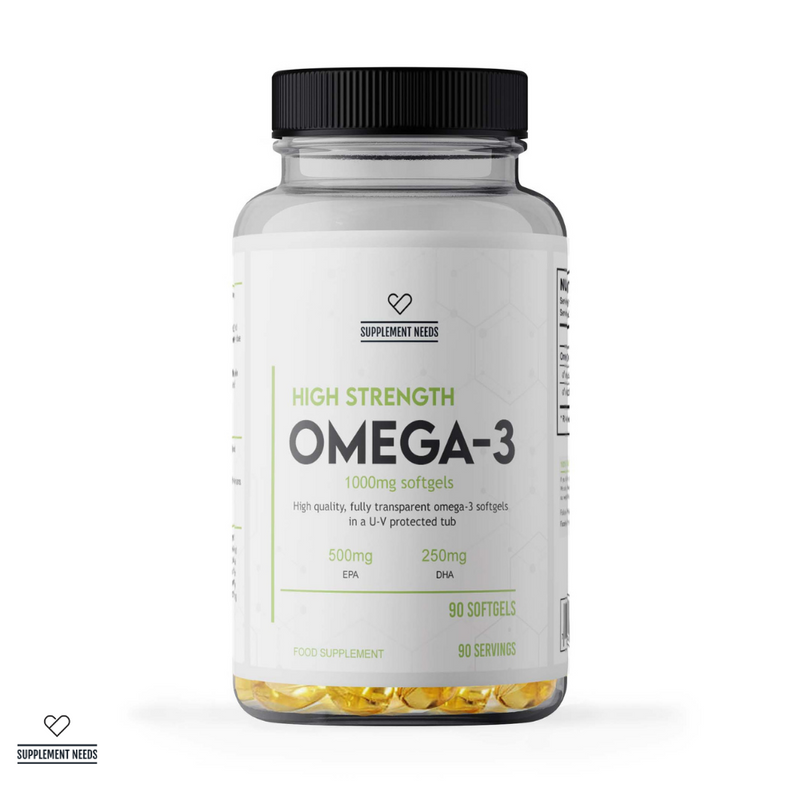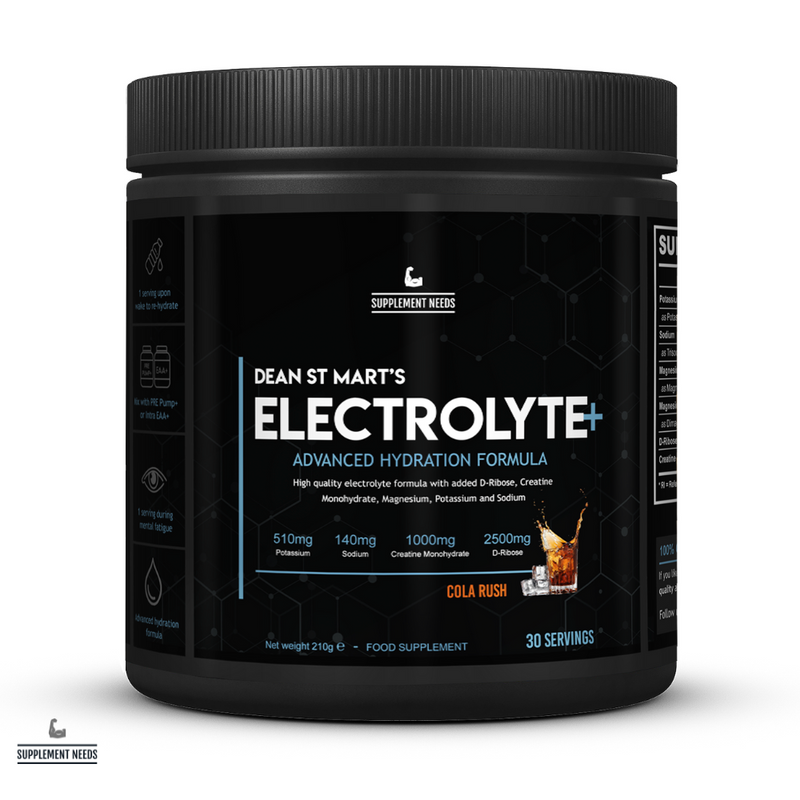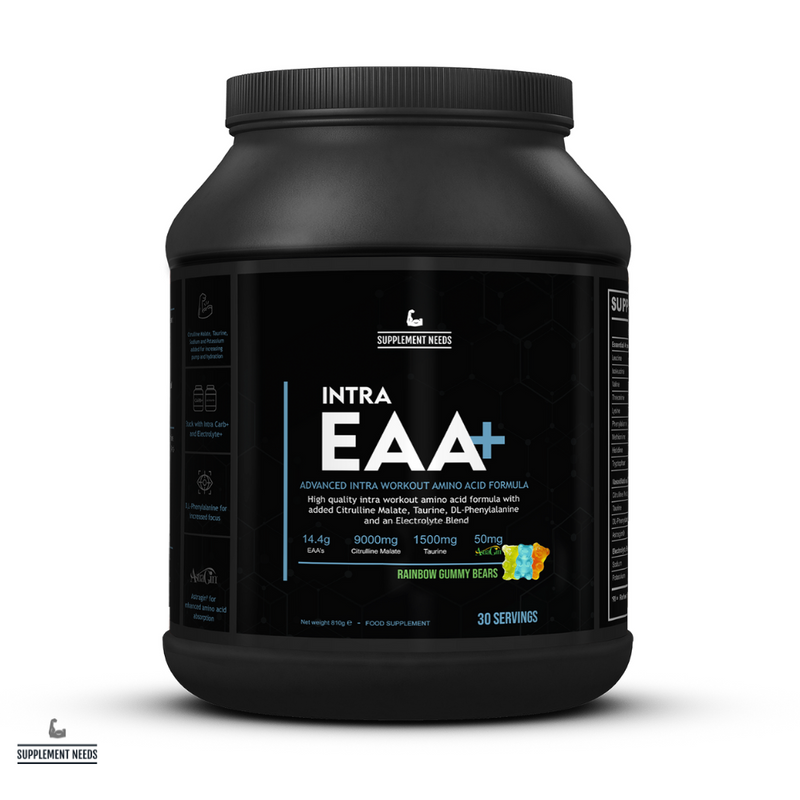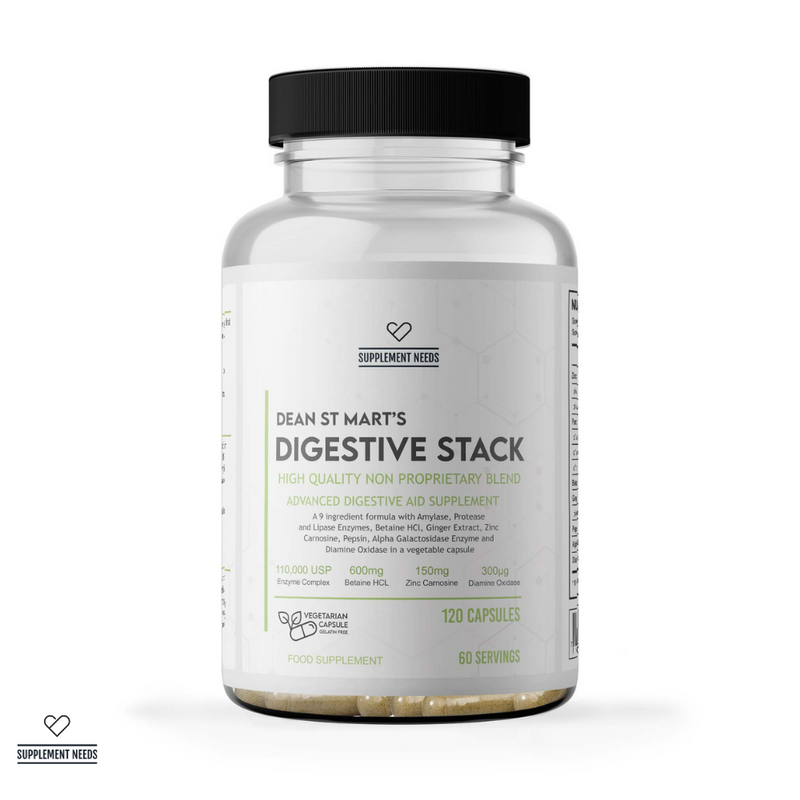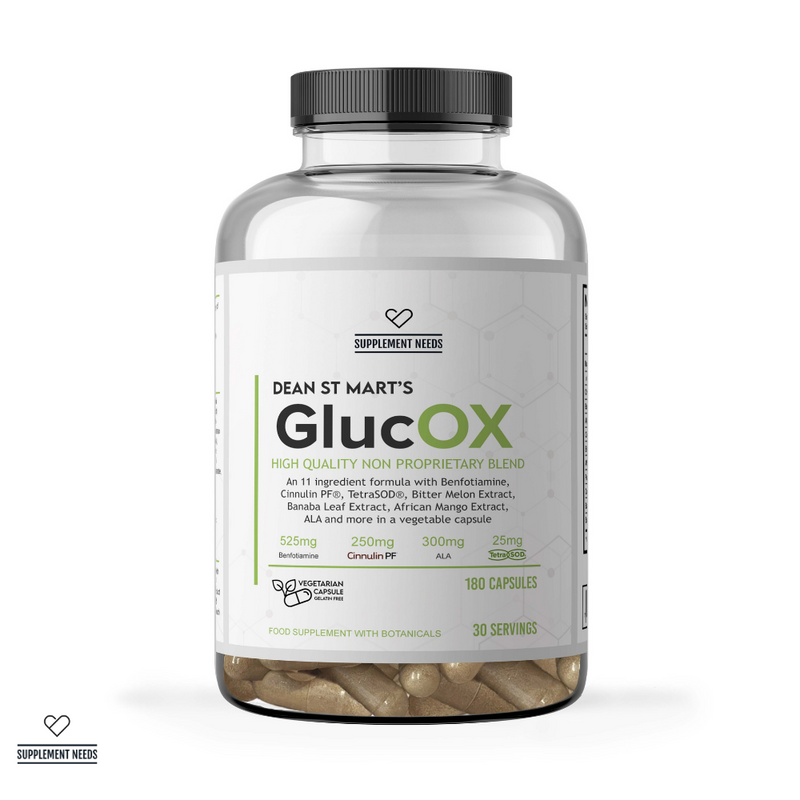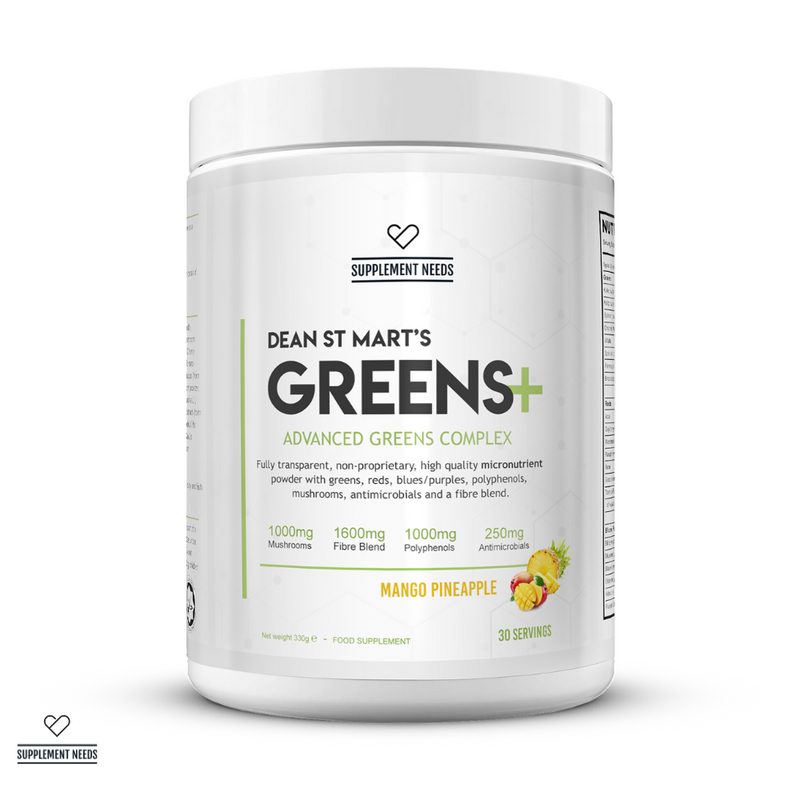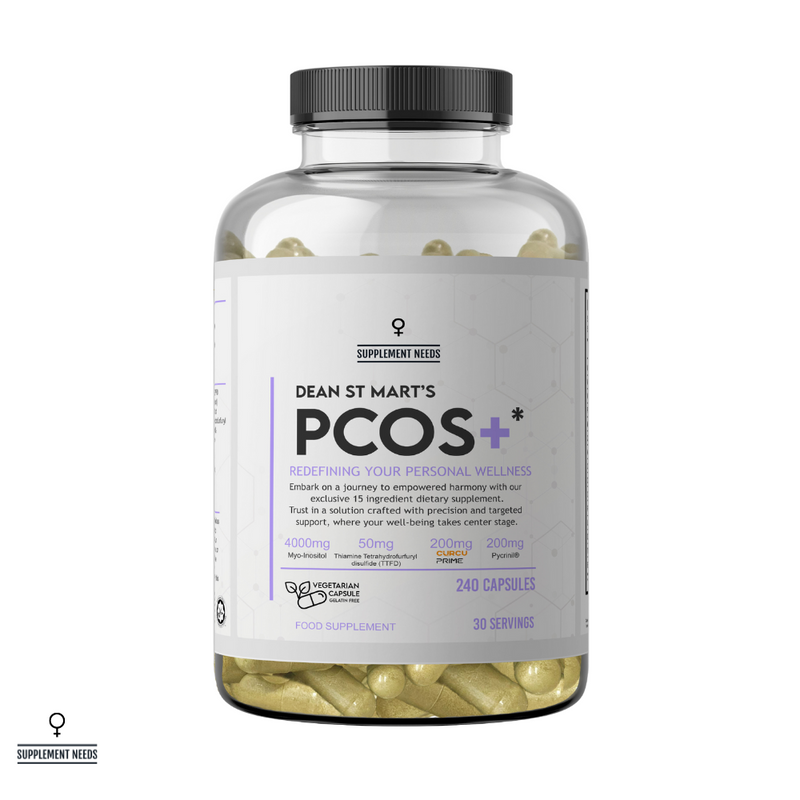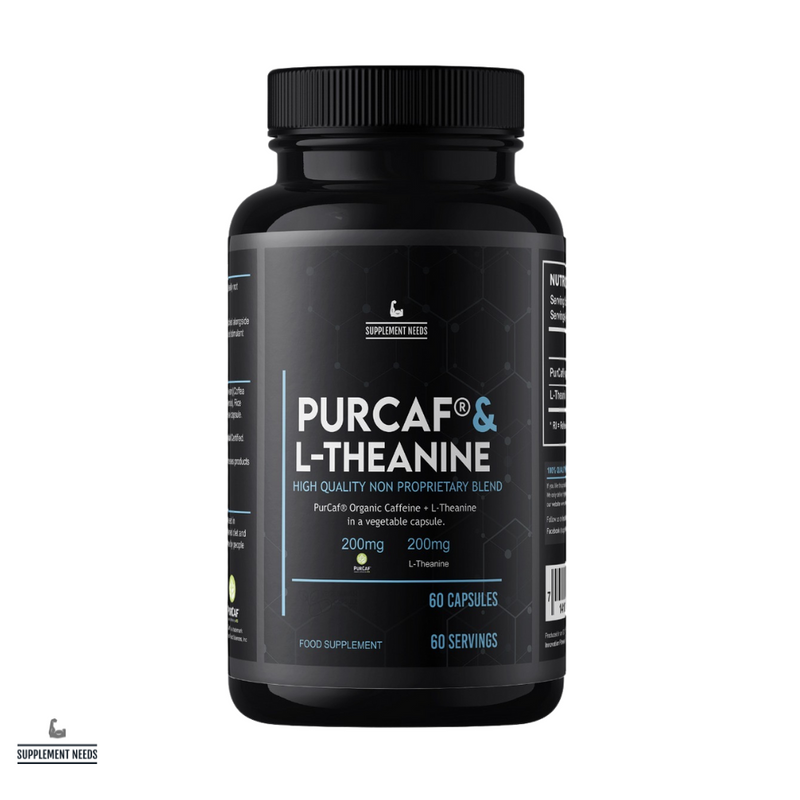From supermarket aisles to the shelves of specialist supplement stores, Omega 3 supplements are everywhere. But, you’ll doubtless have noticed that there can be a big price differential between various Omega 3 supplements. In this guide, the Supplement Needs team is going to make the case as to why you should avoid cheap Omega 3 supplements…
What is Omega 3?
We appreciate that not everyone reading this is going to know a huge amount about Omega 3. That’s especially true if you’re new to the world of supplementation.
So, what exactly is Omega 3? What does it do? And, what should you think about when choosing an Omega 3 supplement? Let’s take a look.
The term Omega 3 refers to a group of essential fatty acids (typically written as the initialism EFA).
What, then, are essential fatty acids?
By breaking down the term, we can develop a better understanding of EFAs.
Firstly, they’re ‘essential’. If you’ve read our guide to multivitamins, then you’ll know that this means that essential fatty acids cannot be produced by the body (the technical term for this is that they cannot be ‘synthesised endogenously’). As a result, you need to obtain essential fatty acids from sources outside your body e.g. foodstuffs.
In an interesting historical footnote, fatty acids were not widely recognised amongst the scientific community to be essential nutrients. This changed in 1929 when researchers George and Mildred Burr ‘reported that dietary fatty acid was required to prevent a deficiency disease that occurred in rats fed a fat-free diet’1.
Secondly, they are ‘fatty acids’. In simple terms, this means they are acids with a linked fat (which can be either saturated or unsaturated). The more technical answer is that fatty acids are a ‘carboxylic acid with an aliphatic chain’2.
That’s the definition of essential fatty acids, but what exactly is their purpose?
In short, essential fatty acids act as the ‘building blocks’ of the fat in our bodies. Or, to put it another way, they act as the structural components of lipids3. As one study characterises fatty acids, ‘It could be said that they are the framework or skeleton of fat’4.
In turn, these lipids play an integral role in the proper function of your body. Amongst their varied functions lipids form part of cell membranes, help to control what substances pass in and out of cells, assist in the movement and storage of energy, and help the body to absorb vitamins and produce hormones<5.
In a word, lipids - and by extension fatty acids - are vital for your body!

What are the different types of essential fatty acids?
As you’ll have gathered so far, the term essential fatty acids doesn’t refer to a single homogenous type of acid. Instead, it’s an umbrella term that covers a plethora of different types of EFA.
So, what are they?
In the broadest sense, there are two main essential fatty acids as follows:
- ω−3 fatty acid - better known as Omega 3 fatty acid, ω−3 fatty acid takes the form of α-linolenic acid (ALA).
- ω−6 fatty acid - Omega 6 fatty acid takes the form of linoleic acid (LA).
Note - both Omega 3 and Omega 6 are classed as short chain polyunsaturated fatty acids (SC-PUFA) as they contain no more than 18 carbon atoms. You will see other fatty acids that are classed as medium-chain fatty acids (MCFAs), long-chain polyunsaturated fatty acids (LC-PUFA), and very long chain fatty acids (VLCFAs) however these fatty acids are ‘downstream’ from Omega 3 and Omega 6.
In other words, the two main essential fatty acids that you should be concerned about (in terms of obtaining sufficient amounts in your diet) are Omega 3 and Omega 6.
Saturated vs unsaturated fatty acids
Fatty acids can also be classified based on their saturation, being either saturated or unsaturated.
Saturated fats do not have a covalent bond between two carbon atoms (denoted by c=c). As a result, they are solid at room temperature; hence their presence in foodstuffs such as cheese, butter, and types of milk.
Examples of saturated fatty acids include:
- Stearic acid.
- Palmitic acid.
- Cerotic acid.
Unsaturated fatty acids are those fatty acids that do contain one or more covalent bonds between two carbon atoms. As a result, they are typically liquid at room temperature. Unsaturated fats can be further divided into two categories:
- Monounsaturated fats - fats that contain a single covalent bond between two carbon atoms.
- Polyunsaturated fats - fats that contain more than one covalent bond between two carbon atoms.
Note - both Omega 3 and Omega 6 are both polyunsaturated fatty acids. The reason we have to obtain these fatty acids exogenously is because the human body lacks the desaturase enzymes required for their production. (Desaturation is effectively the process whereby saturated fatty acids are enzymatically converted into unsaturated and polyunsaturated fatty acids)67.
Going beyond Omega 3 and Omega 6 fatty acids
As we stated above, both Omega 3 and Omega 6 fatty acids are the ‘starting point’ from which further fatty acids are produced.
It’s for this reason that you should pay particular attention to the actual composition of any Omega 3 supplement that you purchase. In particular, you should look at the ‘fractions’ that are contained within a given Omega 3 supp.
To provide you with a clearer idea of what to look for, let’s take a look at how each of the two essential fatty acids break down into further desaturated acids8:
- Omega 3 (ω−3 fatty acid):
- Eicosapentaenoic acid (EPA).
- Docosahexaenoic acid (DHA).
- Omega 6 (ω−6 fatty acid):
- Gamma-linolenic acid (GLA).
- Dihomo-gamma-linolenic acid (DGLA).
- Arachidonic acid (AA).
What foods contain Omega 3 and Omega 6?
If you’ve been paying attention, then you'll know that our bodies do not possess the innate ability to synthesise Omega 3 and Omega 6. As a result, we need to find dietary sources of Omega 3 and Omega 6.
Dietary sources of Omega 3 include:
- Fatty fish (e.g. salmon, mackerel, herring, sardines, anchovies).
- Seeds (in particular, flax seeds, chia seeds, walnuts etc).
Dietary sources of Omega 6 include:
- Vegetable oils (and foods cooked in vegetable oils). Soybean oil and corn oil are especially high in Omega 6.
- Nuts (specifically, walnuts, sunflower seeds, almonds, and cashew nuts).

However, as you’ll find with many other essential nutrients that the body requires, the diet of many modern people does not contain sufficient amounts of Omega 3 or Omega 6.
In fact, global studies9 have found that the UK population has some of the lowest blood serum levels of the Omega 3 fatty acids docosahexaenoic acid (DHA) and eicosapentaenoic acid (EPA). With this in mind, it’s possible that you are deficient in Omega 3 and Omega 6 fatty acids.
And, don’t forget that Omega 3 and Omega 6 both play important roles in maintaining the metabolic processes that keep your body healthy.
What are the symptoms of an Omega 3 deficiency?
A deficiency in Omega 3 can have wide-ranging consequences and negative health impacts. Common signs of an Omega 3 deficiency include:
-
Skin irritation, dryness and generally poor skin health. As we saw earlier, Omega 3 helps to support the integrity of cell membranes; thus it’s integrally linked to the health of your skin. One study10 actually found that Omega 3 may have a therapeutic effect on skin conditions such as dermatitis.
-
Depression. Omega 3 fatty acids can be found in abundance in brain cell membranes; thus, a deficiency can have negative implications for both neuronal health and mental health. Indeed, a meta-analysis11 of 26 studies, covering 2,160 participants found that taking Omega 3 supplements had a beneficial effect on symptoms of depression.
-
Poor eye health. A deficiency of Omega 3 in your diet can result in poor eye health, in particular dry eyes. As one comprehensive meta-analysis12 of 17 studies covering 3,363 people, it was found that taking Omega 3 supplements significantly reduced dry eye symptoms (compared to individuals taking a placebo).
-
Hair loss and/or reduced hair density. Given the role that Omega 3 plays in ensuring structural integrity and managing moisture and movement of energy, it’s perhaps not surprising to learn that a deficiency in Omega 3 can have a negative effect upon your hair. A six-month study with 120 participants found that Omega 3 supplementation resulted in participants reporting reduced hair loss and increased hair density (compared to the control group)13.
- Joint pain. Thanks to their anti-inflammatory properties, Omega 3s can potentially help ameliorate joint pain and stiffness. Studies14 back this up, finding that Omega 3 supplementation may both reduce joint pain and increase grip strength.
It’s clear then, that you want to avoid a deficiency of Omega 3 in your diet. However, given the ever-increasing pace of life and the difficulty of consistently obtaining dietary sources, it’s perhaps not a surprise to see more people turning to Omega 3 supplements.

How much Omega 3 do you need each day?
Whether you intend to obtain your Omega 3 from foodstuffs or supplements (or a combination of both), it’s important to note how much you should be aiming to consume each day.
Here in the UK, there isn’t a hard and fast Government recommendation for Omega 3 intake (although the NHS suggests that individuals should eat two 140g (cooked weight) portions of fish each week. Of these portions, one should be from an oily fish such as mackerel or salmon).
Note - a number of studies15 suggest that even people who consume fish regularly do not have sufficient levels of Omega fatty acids in their bloodstream. It’s for this reason that many people choose to augment their diet with an Omega 3 supplement.
Leading cardiovascular charity, the British Heart Foundation suggests16 that you should aim for an intake of approximately 450 mg of Omega 3 per day.
Furthermore, the British Heart Foundation also recommends that any Omega 3 supplements you choose shouldn’t be generic ‘fish oil’. Instead, the charity recommends that you select an Omega 3 supplement that explicitly contains both DHA and EPA fatty acids.
Another major cardiovascular charity, Heart UK, echoes the British Heart Foundation’s recommendations, suggesting that you should ‘Aim to get 500 mg of EPA and DHA combined each day’17.
However, these recommendations do diverge somewhat from some of the scientific literature, which suggests that a higher dose of Omega 3 fatty acids is required in order to affect an individual’s O3i (Omega 3 index). The O3i is a measure of the ‘EPA and DHA content of erythrocytes expressed as a percent of total identified fatty acids’. Further, the O3i can be considered ‘as a marker of increased risk for death from coronary heart disease’18.
What does this mean in layman's terms?
The O3i is effectively a measure of the amount of Omega 3 fatty acids in your body. Too few fatty acids (e.g. a low O3i score) and this can be considered a risk factor for cardiovascular health issues.
So, what O3i score should you be aiming for? Studies suggest that, ‘Optimal levels appear to be 8% or greater’19.
As you’d expect, researchers have engaged in studies in an attempt to work out the best way to achieve and maintain an O3i score of 8% or greater.
A meta-analysis20 of 58 studies has provided the clearest answer yet regarding how to achieve that >8% O3i score. This meta-analysis found that ‘Supplements composed of triglycerides were more bioavailable and thus more effective than other formulas. Based on the data evaluated, practical recommendations to improve O3i to >8% are consumption of 1,000-1,500 mg/d EPA plus DHA as triglycerides for at least 12 weeks’.
Caveat: Omega 3 and exercise
Aside from general health implications, researchers have been investigating the interaction between eicosapentaenoic acid (EPA), exercise, and inflammation.
More specifically, researchers have hypothesised that Omega 3 fatty acids - notably eicosapentaenoic acid (EPA) and docosahexaenoic acid (DHA) - may attenuate (that is, reduce) exercise-induced inflammation.
And, according to one particular study21, this hypothesis appears to hold water, with the team behind the study summarising its findings as follows: ‘Our research demonstrates that 3,000 mg.d-1 Omega 3 fatty acid supplementation minimises the severe, delayed-onset muscle soreness that results from strenuous eccentric exercise’.
Why is this the case? It appears that ‘when humans ingest the Omega 3 fatty acids, eicosapentaenoic acid (EPA) and docosahexaenoic acid (DHA), there is a decrease in both the production of thromboxane A2, a potent platelet aggregator and vasoconstrictor, and leukotriene B4 formation, an inducer of inflammation’22.
In summary; research suggests that if you’re going to be engaging in intensive exercise, you may potentially benefit from supplementing your diet with a higher dosage (~3,000 mg) of Omega 3 fatty acids (notably DHA and EPA).
What are the potential health benefits of Omega 3?
So far, we’ve looked at what Omega 3 is, its different types, and some of the scientific literature covering dosage and consumption.
But, what’s the point of consuming Omega 3 in the first place? Does doing so have any tangible benefits?
Handily, Omega 3 is one of the most studied nutrients, with a huge array of scientific studies to draw from. As a result, there is a considerable evidence base to suggest that Omega 3 can deliver myriad health benefits.
Below, we’ll explore some of those potential health benefits and the evidence supporting each one.

Improved risk factors for heart disease
Arguably one of the most well-known (and studied) potential benefits of Omega 3 supplementation is improved cardiovascular health outcomes.
The link between Omega 3 and improved cardiovascular health goes back a number of decades, when researchers observed that communities with high levels of fish consumption had low rates of heart disease2324. Upon investigation, a causal link was suggested between Omega 3 fatty acids within fish and these health outcomes.
Since then, further studies have elucidated more links between Omega 3 consumption and improved cardiovascular outcomes.
Take triglycerides, for example. Without going into too much technical detail, triglycerides are a type of fat that circulates in your bloodstream. However, should you develop high-levels of triglycerides, this can raise your risk of heart disease and stroke (note - a healthy triglyceride level is considered to be below 150 milligrams per decilitre (mg/dL) in adults)25.
Studies, then, have found that Omega 3 consumption can ‘significantly reduce levels of triglycerides’26.
The mechanism of action for this outcome is thought, by some researchers27, to be due to Omega 3 fatty acids lowering ‘plasma triglycerides by increasing fatty acid oxidation, which suppresses hepatic lipogenesis, and subsequent VLDL28 (Very Low Density Lipoprotein) production’.
The potential benefits of Omega 3 for cardiovascular health don’t end there.
A bulk of studies2930 have linked Omega 3 with an increase in levels of HDL (High-Density Lipoprotein) cholesterol - which is oft characterised as ‘good cholesterol’.
Research has also suggested a link between Omega 3 consumption and a reduction in blood clots (which can be a risk factor for both heart disease and stroke). Studies suggest Omega 3 does this by deterring the ‘clumping together’ of platelets31 and influencing blood coagulation32.
In short, there’s a considerable evidence base to suggest that Omega 3 supplementation may potentially have a positive effect on cardiovascular health outcomes.
May reduce inflammation
As anyone who has even a passing interest in supplementation and physiology will tell you, inflammation - particularly inflammation which is chronic - can contribute to a plethora of harmful diseases, including heart disease and cancer33.
The key then, is to reduce instances of inflammation wherever possible.
It’s the potential therapeutic benefit of Omega 3 fatty acids in relation to inflammation that has undergone significant scientific scrutiny in recent years.
Where Omega 3 fatty acids have been particularly studied34 is their ability to reduce the production of eicosanoids and cytokines35 - molecules that play a key role in the development, onset and resolution of inflammation.
Large meta-analyses36 also provide further weight to the concept that Omega 3 fatty acids can have a suppressive effect upon inflammatory molecules and thus reduce inflammation.
May inhibit cognitive decline
Given the Omega 3 fatty acids can be found in abundance in brain cell membranes (DHA being especially prevalent), it’s perhaps no surprise that the link between Omega 3 and cognitive health has been a focus of study.
One extensive meta-analysis37 concluded that ‘omega-3 supplementation might have a positive effect on cognitive function. Thus, n-3 LCPUFAs could be used as a preventative or therapeutic tool for cognitive decline in aged or elder adults’.
Another meta-analysis38 found that not only may Omega 3 reduce the onset of cognitive decline, but also represents a ‘preventative strategy against Alzheimer’s disease’.
Whilst there are some positive indications that Omega 3 may have a beneficial impact upon cognitive health, more research is needed.
May improve skeletal health
For those over a certain age, cod liver oil - which has been a traditional source of Omega 3 fatty acids - is irrevocably linked with joint health. (You may remember the TV ads of old whereby a tin man ‘lubricates’ his joints with cod liver oil).
However, it transpires that there’s a good reason why Omega 3 has been historically linked to the skeleton and joints. Take the study39 that suggests that Omega 3 supplementation may improve bone strength by boosting the amount of Calcium in your bones.
A recent systematic review40 of the extant literature has also suggested that Omega 3 supplementation may help alleviate the symptoms of arthritis. It concluded that ‘Omega-3 can significantly reduce painful symptoms in patients suffering from OA (osteoarthritis) in synovial joints’.
May alleviate menstrual pain
This may sound like an unusual potential benefit of Omega 3 supplementation, but a raft of studies indicate that Omega 3 may help to reduce symptoms of menstrual pain.
One study41 concluded that ‘Supplementation with omega-3 fatty acids reduced the symptom intensity of primary dysmenorrhea’. In fact, the study highlighted that ‘Supplementation efficacy was sufficient to decrease the ibuprofen rescue dose’. That’s a significant finding if it can be corroborated by further research!

Another study42 - in the form of a randomised clinical trial - found that ‘The treatment of premenstrual symptoms using an omega-3 supplement reduced symptoms and ameliorated women’s quality of life’.
Perhaps one of the most eye-opening studies in relation to Omega 3 supplementation and improved menstrual symptoms is the 2011 study43 led by Zafari that concluded that ‘the efficacy of fish oil is better than ibuprofen on treatment of severe pain in primary dysmenorrhea’.
Tip - if you want to try a premium Omega fatty acid supplement that has been designed specifically with women in mind, try Supplement Needs Omega Femme.
May support skin health
As we touched on earlier, Omega 3 fatty acids play an important role in maintaining the integrity of cell membranes. From this then, it follows that Omega 3 could support healthy skin.
This isn’t mere supposition, though.
Eicosapentaenoic acid (EPA) has been linked to a number of potential benefits. These include; supporting the barrier function of skin44, having a potentially ameliorating influence upon inflammatory skin diseases45, and potentially assisting in the treatment of psoriasis, atopic dermatitis, acne, and skin ulcers46.
May support eye health
Given that a deficiency in Omega fatty acids can result in conditions such as ‘dry eye’, it makes sense that Omega 3 supplementation may potentially have some benefits for overall eye health.
It also makes sense given that docosahexaenoic acid (DHA) is a major structural component of your eyes47. It can also be found in high concentrations in the brain.
DHA also plays a prominent role in counteracting cell damage in the eyes that is induced by oxidative stress48. Promisingly, supplementation of Omega 3 has also been linked by studies49 to a reduced risk of macular degeneration - a leading cause of eye damage (and in the worst instances) blindness.
May help alleviate symptoms of depression and anxiety
Finally, an increasing body of evidence suggests that Omega 3 fatty acids may have a beneficial impact upon the symptoms of depression and anxiety.
Two studies5051 in particular suggest that individuals who consume Omega 3 fatty acids on a regular basis are less likely to have depression.
Another set of studies52 indicates that Omega 3 supplements may improve the symptoms of depression. One of the meta-analyses in question determined that ‘Current evidence supports the finding that omega-3 PUFAs with EPA >60% at a dosage of <1 g/d would have beneficial effects on depression’53.
The conclusion of that meta-analysis chimes with the findings of another study54, which determined that eicosapentaenoic acid (EPA) is the most effective of the Omega 3 fatty acids in alleviating the symptoms of depression.
Cheap Omega 3 supplements: why you should avoid them
By now, you’re hopefully well versed in the many potential health benefits that are associated with Omega 3.
Perhaps you’re now considering purchasing an Omega 3 supplement and making it a regular part of your diet?
Well, if that’s the case, make sure you read the next part of this article. In it, we’ll explain why buying cheap Omega 3 supplements is a truly false economy. We’ll also provide you with our top tips and things to look for to ensure you buy only the best, most efficacious Omega 3 supplement.
A lack of constituent fatty acids
Whilst most Omega 3 supplements are primarily made up of a fish oil (or in some cases krill oil), not all Omega 3 supplements are created equal!
Many cheap Omega 3 supplements will simply contain a generic ‘fish oil’ and won’t provide you with a more detailed breakdown of the constituent fatty acids.
As we’ve seen throughout this article, there are a variety of Omega 3 fatty acids - particularly eicosapentaenoic acid (EPA) and docosahexaenoic acid (DHA). And, each of these constituent fatty acids can have beneficial aspects. So, it’s important that you know how much of each fraction your chosen supplement contains.
Here at Supplement Needs, we make this clear. Take our Omega PRO+, for example. We provide you with the complete breakdown of its constituent fatty acids. As per each six softgel serving, you’ll get:
- DHA - 1,440 mg.
- EPA - 420 mg.
- DPA - 240 mg.
Aside from transparency, why else is it important that you select an Omega 3 supplement that explicitly contains stated doses of EPA and DHA?
The answer lies in how your body metabolises α-linolenic acid (ALA). As we saw earlier, α-linolenic acid is the ‘initial form’ of Omega 3. In order to obtain those all-important DHA and EPA fatty acids, your body needs to metabolise α-linolenic acid. The thing is, our bodies don’t do this very well! This is highlighted in a study which highlights the fact that, ‘although mammals have the necessary enzymes to make the long-chain PUFA from the parent PUFA, in vivo studies in humans show that ~5% of ALA is converted to EPA and <0.5% of ALA is converted to DHA’55.
Basically, if you buy a cheap Omega 3 supplement that doesn’t contain the DHA and EPA fractions (and is just composed of ALA), your body is going to struggle to obtain any reasonable volume of DHA and EPA.
To put it another way, buy an Omega 3 supplement that already contains DHA and EPA, and it’ll save your body the effort of trying to convert ALA into those fractions.
A lack (or complete absence) of DPA
You may have spotted an initialism above that you’ve not encountered so far in this article; DPA.
DPA stands for docosapentaenoic acid (DPA) and is derived from eicosapentaenoic acid (EPA). Like the other Omega 3 fatty acids, DPA is ultimately synthesised from ALA.
However, as with DHA and EPA, the body struggles to synthesise adequate volumes of DPA from ALA.
So, the best thing you can do is cut out the middleman and buy an Omega 3 supplement that already contains a fraction of DPA.
The thing is, you’ll find DPA-containing Omega 3 supplements few and far between. Why? Because obtaining DPA from fish is both complicated and costly. When fish oil is processed, special effort must be taken to isolate DPA. Furthermore, even once isolated, DPA is incredibly difficult to extract without being oxidised.
It’s for those reasons that you’ll only find DPA in the very best Omega 3 supplements. Naturally, you’ll find DPA in Supplement Needs Omega PRO+ (at 240 mg per 6 softgel serving).
And, given the many reported health benefits of DPA you certainly want to see it in your chosen Omega 3 supplement.
Potential health benefits56 of docosapentaenoic acid (DPA), include:
- Direct effects on inflammation.
- An influence on lipid metabolism.
- A complementary effect on cognitive function.
Ethyl-ester based Omega 3 supplements marketed as ‘premium’
A fairly common issue we see with Omega 3 supplements is products marketed as ‘premium’ when they are in fact based on ethyl-ester fish oils.
The reality is that when it comes to buying Omega 3 fish oils - you have two choices. You can buy Omega 3 supps that are made from ethyl ester based fish oils, or triglyceride based fish oils.
Both forms are perfectly acceptable as supplements - however, there is a definite distinction between the two types.
It all comes down to bioavailability.
Ethyl ester Omega 3 supplements are not as easily absorbed by the body compared to triglyceride.
Studies57 have also shown that ethyl ester-based fish oils are more prone to oxidation and rancidity compared to triglyceride fish oils.
If you want a ‘premium’ highly bioavailable Omega 3 supplement, then choose reformed (or re-esterified) triglyceride based Omega 3 supplements. These are supplements where the fish oil has been processed through purification and concentration. This doesn’t just allow the EPA, DHA and DPA fractions to be isolated and extracted, but it typically has the effect of making those fractions more concentrated.
Once this has been done, the fish oil is re-esterified back into triglyceride form. As studies58 have indicated, fatty acids in triglyceride form have far better bioavailability than fatty acids in ethyl ester form. As one study characterised it, ‘A six-month supplementation of identical doses of EPA+DHA led to a faster and higher increase in the omega-3 index when consumed as triglycerides than when consumed as ethyl esters’59.
This is predominantly due to the way in which the body digests triglycerides. Ingested triglycerides pass through the stomach into the small intestine where they are dispersed as micelles. Once dispersed, the triglycerides are hydrolysed by pancreatic lipases and absorbed through the wall of the small intestine.
Bear in mind, however, that this process of converting the fish oil back into triglyceride form is costly, time-consuming and complex. Thus, you’ll find that only the very best Omega 3 supplements take this form.
Note - here at Supplement Needs we are completely transparent about our Omega 3 supplements. We offer both an ethyl-ester based Omega 3 supp - Supplement Needs High-Strength Omega 3 - for those on a budget, and a premium high-end Omega 3 supp - Supplement Needs Omega PRO+ - which is a triglyceride-based Omega 3 supplement for those who want zero compromises.
Based on cod liver oil
Although cod liver oil has been traditionally viewed as a source of Omega 3 fatty acids, today it is best avoided.
Why? Because, like in the human body, it's the job of a fish’s liver to filter out toxins. This can result in fish livers containing high levels of toxins such as heavy metals (e.g. mercury), dioxins, and polychlorinated biphenyls (PCBs).
Fish livers can also contain very high levels of fat-soluble vitamins such as Vitamin A. Should you consume too much Vitamin A, then you risk injury to your liver such as fibrosis (via a condition known as Hypervitaminosis A60).
Instead, you should choose Omega 3 supplements that use fish oil that is derived from the broader tissues of the fish.
Unpleasant flavour
The fact is, fish oil isn’t exactly the most palatable substance in the world. Unfortunately, if you opt for a cheap Omega 3 supplement you’ll likely find that you have to put up with an unpleasant taste every time you take it.
That’s because going to the effort of developing and formulating palatable flavours adds an extra layer of cost to an Omega 3 supplement - something that many brands are unwilling to do.
Here at Supplement Needs we ensure that our Omega 3 supplements are not merely palatable, but actively enjoyable to consume. Our premium Omega PRO+ is available in a delicious tutti frutti flavour, for example.
No vegan alternatives
Many supplement brands don’t bother trying to provide their customers with vegan-friendly Omega 3 alternatives. Again, this is usually down to the additional R&D costs that are involved, or simply because they don’t know how to formulate a stable and effective vegan-friendly form of Omega 3.

Here at Supplement Needs, we understand the needs of vegans and - in response - have developed Supplement Needs Omegavie®. This Omega 3 supplement is based on an algal-derived form of Omega 3 which contains excellent doses of both DHA and EPA (250 mg and 50 mg respectively per single capsule serving).
Tip - if you’re looking for more than just vegan-friendly Omega 3, checking out Supplement Needs’ complete vegan supplement range now.
Choose the best, choose Supplement Needs
If you want to avoid cheap Omega 3 supplements and buy a supplement that’s actually bioavailable, contains the correct fatty acid fractions and which has been designed by a true expert, then buy from Supplement Needs now.
Our range of Omega 3 supplements have been researched, designed and formulated by Dr. Dean St Mart PhD. Dr Dean holds a double first class honours in chemistry and pharmaceutical chemistry and a PhD in synthetic organic chemistry and fluorescence spectroscopy. There aren’t many Omega 3 supplements that have that level of expertise behind them!
Not only are our supplements researched-backed, but they’re available with free delivery (on orders over £40) and are dispatched the same day (when ordered before 8pm Monday-Friday and 3pm Saturday-Sunday).
What are you waiting for? Level up with Supplement Needs’ Omega 3 range today.
Shop Supplement Needs’ Omega 3 range now
Disclaimer
The information on this website should not be used as a substitute for professional medical advice or care. If you have questions about your health, please contact your doctor.
References
1. Spector A, Kim H. Discovery of essential fatty acids [online]. Available at: https://pubmed.ncbi.nlm.nih.gov/25339684/ (Accessed on 28th October 2024).
2. Fatty Acid. Wikipedia [online]. Available at: https://en.wikipedia.org/wiki/Fatty_acid (Accessed on 28th October 2024).
3. Fatty acid. NCI Dictionary of Cancer Terms [online]. Available at: https://www.cancer.gov/publications/dictionaries/cancer-terms/def/fatty-acid (Accessed on 28th October 2024).
4. Waisundara V. Introductory Chapter: Fatty Acids in Modern Times [online]. Available at: https://www.researchgate.net/publication/329786065_Introductory_Chapter_Fatty_Acids_in_Modern_Times (Accessed on 28th October 2024).
5. Ahmed S, Shah P, Ahmed O. Biochemistry, Lipids [online]. Available at: https://www.ncbi.nlm.nih.gov/books/NBK525952/ (Accessed on 28th October 2024).
6. Omega 3 Fatty Acids: Fact Sheet for Health Professionals [online]. Available at: https://ods.od.nih.gov/factsheets/Omega3FattyAcids-HealthProfessional/# (Accessed on 28th October 2024).
7. Omega-6 Fatty Acids [online]. Available at: https://medlineplus.gov/druginfo/natural/496.html (Accessed on 28th October 2024).
8. Scanes G. Animal Products and Human Nutrition [online]. Available at: https://www.sciencedirect.com/book/9780128052471/animals-and-human-society (Accessed on 28th October 2024).
9. Stark K, Elswyk M, Higgins M, et. al. Global survey of the omega-3 fatty acids, docosahexaenoic acid and eicosapentaenoic acid in the bloodstream of healthy adults [online]. Available at: https://www.sciencedirect.com/science/article/pii/S0163782715300333 (Accessed on 28th October 2024).
10. Callaway J, Schwab U, Harvima I, et. al. Efficacy of dietary hempseed oil in patients with atopic dermatitis [online]. Available at: https://pubmed.ncbi.nlm.nih.gov/16019622/ (Accessed on 28th October 2024).
11. Liao Y, Xie B, Zhang H, et. al. Efficacy of omega-3 PUFAs in depression: A meta-analysis [online]. Available at: https://pubmed.ncbi.nlm.nih.gov/31383846/ (Accessed on 28th October 2024).
12. Kangari H, Eftekhari M, Sardari S, et. al. Short-term consumption of oral omega-3 and dry eye syndrome [online]. Available at: https://pubmed.ncbi.nlm.nih.gov/23642375/ (Accessed on 28th October 2024).
13. Le Floc’h C, Cheniti A, Connétable S, et. al. Effect of a nutritional supplement on hair loss in women [online]. Available at: https://pubmed.ncbi.nlm.nih.gov/25573272/ (Accessed on 28th October 2024).
14. Vermel A. Clinical application of omega-3-fatty acids (cod liver oil) [online]. Available at: https://pubmed.ncbi.nlm.nih.gov/16320848/ (Accessed on 28th October 2024).
15. McDonnell S, French C, Baggerly C, et. al. Cross-sectional study of the combined associations of dietary and supplemental eicosapentaenoic acid + docosahexaenoic acid on Omega-3 Index [online]. Available at: https://www.sciencedirect.com/science/article/pii/S0271531719305950?via%3Dihub (Accessed on 29th October 2024).
16. British Heart Foundation. Omega-3 foods and your heart [online]. Available at: https://www.bhf.org.uk/informationsupport/heart-matters-magazine/nutrition/omega-3s-and-your-heart# (Accessed on 28th October 2024).
17. Heart UK. Omega 3 fats [online]. Available at: https://www.heartuk.org.uk/low-cholesterol-foods/omega-3-fats# (Accessed on 28th October 2024).
18. Harris W. The omega-3 index: clinical utility for therapeutic intervention [online]. Available at: https://pubmed.ncbi.nlm.nih.gov/20809235/# (Accessed on 29th October 2024).
19. Harris W. The omega-3 index: clinical utility for therapeutic intervention [online]. Available at: https://pubmed.ncbi.nlm.nih.gov/20809235/# (Accessed on 28th October 2024).
20. Dempsey M, Rockwell M, Wentz L. The influence of dietary and supplemental omega-3 fatty acids on the omega-3 index: A scoping review [online]. Available at: https://pmc.ncbi.nlm.nih.gov/articles/PMC9892774/ (Accessed on 29th October 2024).
21. Jouris K, McDaniel J, Weiss E. The Effect of Omega-3 Fatty Acid Supplementation on the Inflammatory Response to eccentric strength exercise [online]. Available at: https://pmc.ncbi.nlm.nih.gov/articles/PMC3737804/ (Accessed on 29th October 2024).
22. Weber P, Fischer D, vonSchacky C, et. al. Dietary Omega Polyunsaturated fatty acids and eicosanoid formation in man. In. Health effects of polyunsaturated fatty acids in seafoods. Academic Press; Orlando: 49-60.
23. Leaf A. Historical overview of n-3 fatty acids and coronary heart disease [online]. Available at: https://pubmed.ncbi.nlm.nih.gov/18541598/ (Accessed on 29th October 2024).
24. Dewailly E, Blanchet C, Gingras S, et. al. Fish consumption and blood lipids in three ethnic groups of Québec (Canada) [online]. Available at: https://pubmed.ncbi.nlm.nih.gov/12848280/ (Accessed on 29th October 2024).
25. National Heart, Lung, and Blood Institute. High Blood Triglycerides [online]. Available at: https://www.nhlbi.nih.gov/health/high-blood-triglycerides (Accessed on 29th October 2024).
26. Skulas-Ray A, Wilson P, Harris W, et. al. Omega-3 Fatty Acids for the Management of Hypertriglyceridemia: A Science Advisory From the American Heart Association [online]. Available at: https://pubmed.ncbi.nlm.nih.gov/31422671/ (Accessed on 29th October 2024).
27. Bornfeldt K. Triglyceride lowering by omega-3 fatty acids: a mechanism mediated by N-acyl taurines [online]. Available at: https://pmc.ncbi.nlm.nih.gov/articles/PMC7954591/# (Accessed on 29th October 2024).
28. Shearer G, Savinova O, Harris W. Fish oil - how does it reduce plasma triglycerides? [online]. Available at: https://pubmed.ncbi.nlm.nih.gov/22041134/ (Accessed on 29th October 2024).
29. Bernstein A, Ding E, Willett W, et. al. A meta-analysis shows that docosahexaenoic acid from algal oil reduces serum triglycerides and increases HDL-cholesterol and LDL-cholesterol in persons without coronary heart disease [online]. Available at: https://pubmed.ncbi.nlm.nih.gov/22113870/ (Accessed on 29th October 2024).
30. Eslick G, Howe P, Smith C, et. al. Benefits of fish oil supplementation in hyperlipidemia: a systematic review and meta-analysis [online]. Available at: https://pubmed.ncbi.nlm.nih.gov/18774613/ (Accessed on 29th October 2024).
31. McEwen B, Morel-Kopp M, Chen W, et. al. Effects of omega-3 polyunsaturated fatty acids on platelet function in healthy subjects and subjects with cardiovascular disease [online]. Available at: https://pubmed.ncbi.nlm.nih.gov/23329646/ (Accessed on 29th October 2024).
32. McEwen B, Morel-Kopp M, Tofler G, et. al. The effect of omega-3 polyunsaturated fatty acids on fibrin and thrombin generation in healthy subjects and subjects with cardiovascular disease [online]. Available at: https://pubmed.ncbi.nlm.nih.gov/25703517/ (Accessed on 29th October 2024).
33. Furman D, Campisi J, Verdin E, et. al. Chronic inflammation in the aetiology of disease across the lifespan [online]. Available at: https://pmc.ncbi.nlm.nih.gov/articles/PMC7147972/ (Accessed on 29th October 2024).
34. Jiang J, Li K, Wang F, et. al. Effect of Marine-Derived n-3 Polyunsaturated Fatty Acids on Major Eicosanoids: A Systematic Review and Meta-Analysis from 18 Randomised Controlled Trials [online]. Available at: https://pubmed.ncbi.nlm.nih.gov/26808318/ (Accessed on 29th October 2024).
35. Farjadian S, Moghtaderi M, Kalani M, et. al. Effects of omega-3 fatty acids on serum levels of T-helper cytokines in children with asthma [online]. Available at: https://pubmed.ncbi.nlm.nih.gov/27288633/ (Accessed on 29th October 2024).
36. Kavyani Z, Musazadeh V, Fathi S, et. al. Efficacy of the omega-3 fatty acids supplementation on inflammatory biomarkers: An umbrella meta-analysis [online]. Available at: https://pubmed.ncbi.nlm.nih.gov/35914448/ (Accessed on 29th October 2024).
37. Moral A, Fortique F. Omega-3 fatty acids and cognitive decline: a systematic review [online]. Available at: https://pubmed.ncbi.nlm.nih.gov/31215788/ (Accessed on 29th October 2024).
38. Wood A, Chappell H, Zulyniak M. Dietary and supplemental long-chain omega-3 fatty acids as moderators of cognitive impairment and Alzheimer’s disease [online]. Available at: https://pmc.ncbi.nlm.nih.gov/articles/PMC8854294/ (Accessed on 29th October 2024).
39. Sharma T, Mandal C. Omega-3 fatty acids in pathological calcification and bone health [online]. Available at: https://pubmed.ncbi.nlm.nih.gov/32548903/ (Accessed on 29th October 2024).
40. Bahamondes M, Valdés C, Moncada G. Effect of omega-3 on painful symptoms of patients with osteoarthritis of the synovial joints: systematic review and meta-analysis [online]. Available at: https://pubmed.ncbi.nlm.nih.gov/34303654/ (Accessed on 29th October 2024).
41. Rahbar N, Asgharzadeh N, Ghorbani R. Effect of omega-3 fatty acids on intensity of primary dysmenorrhea [online]. Available at: https://pubmed.ncbi.nlm.nih.gov/22261128/ (Accessed on 29th October 2024).
42. Behboudi-Gandevani S, Hariri F, Moghaddam-Banaem L. The effect of omega 3 fatty acid supplementation on premenstrual syndrome and health-related quality of life: a randomised clinical trial [online]. Available at: https://pubmed.ncbi.nlm.nih.gov/28707491/ (Accessed on 29th October 2024).
43. Zafari M, Behmanesh F, Mohammadi A. Comparison of the effect of fish oil and ibuprofen on treatment of severe pain in primary dysmenorrhea [online]. Available at: https://pmc.ncbi.nlm.nih.gov/articles/PMC3770499/ (Accessed on 29th October 2024).
44. Parke M, Perez-Sanchez A, Zamil D, et. al. Diet and Skin Barrier: The Role of Dietary Interventions on Skin Barrier Function [online]. Available at: https://pmc.ncbi.nlm.nih.gov/articles/PMC7875671/ (Accessed on 29th October 2024).
45. Sawada Y, Saito-Sasaki N, Nakamura M. Omega 3 Fatty Acid and Skin Diseases [online]. Available at: https://pmc.ncbi.nlm.nih.gov/articles/PMC7892455/ (Accessed on 29th October 2024).
46. Thomsen B, Chow E, Sapijaszko M, et.al. The Potential Uses of Omega-3 Fatty Acids in Dermatology: A Review [online]. Available at: https://journals.sagepub.com/doi/10.1177/1203475420929925? (Accessed on 29th October 2024).
47. Calder P. Docosahexaenoic Acid [online]. Available at: https://pubmed.ncbi.nlm.nih.gov/27842299/ (Accessed on 29th October 2024).
48. Lafuente M, González-Herrero M, Villadóniga S, et. al. Antioxidant Activity and Neuroprotective Role of Docosahexaenoic Acid (DHA) Supplementation in Eye Diseases That Can Lead to Blindness: A Narrative Review [online]. Available at: https://pmc.ncbi.nlm.nih.gov/articles/PMC8000043/ (Accessed on 29th October 2024).
49. Jiang H, Shi X, Fan Y, et. al. Dietary omega-3 polyunsaturated fatty acids and fish intake and risk of age-related macular degeneration [online]. Available at: https://pubmed.ncbi.nlm.nih.gov/34749130/ (Accessed on 29th October 2024).
50. Sánchez-Villegas A, Álvarez-Pérez J, Toledo E, et.al. Seafood Consumption, Omega-3 Fatty Acids Intake, and Life-Time Prevalence of Depression in the PREDIMED-Plus Trial [online]. Available at: https://pmc.ncbi.nlm.nih.gov/articles/PMC6315981/ (Accessed on 29th October 2024).
51. Chae M, Park K. Association between dietary omega-3 fatty acid intake and depression in postmenopausal women [online]. Available at: https://pmc.ncbi.nlm.nih.gov/articles/PMC8313386/ (Accessed on 29th October 2024).
52. Su K, Tseng P, Lin P, et. al. Association of Use of Omega-3 Polyunsaturated Fatty Acids With Changes in Severity of Anxiety Symptoms [online]. Available at: https://pmc.ncbi.nlm.nih.gov/articles/PMC6324500/ (Accessed on 29th October 2024).
53. Liao Y, Xie B, Zhang H, et. al. Efficacy of omega-3 PUFAs in depression: A meta-analysis [online]. Available at: https://pubmed.ncbi.nlm.nih.gov/31383846/ (Accessed on 29th October 2024).
54. Liao Y, Xie B, Zhang H, et.al. Efficacy of omega-3 PUFAs in depression: A meta-analysis [online]. Available at: https://pmc.ncbi.nlm.nih.gov/articles/PMC6683166/ (Accessed on 29th October 2024).
55. Plourde M, Cunnane S. Extremely limited synthesis of long chain polyunsaturates in adults: implications for their dietary essentiality and use as supplements [online]. Available at: https://cdnsciencepub.com/doi/10.1139/H07-034 (Accessed on 29th October 2024).
56. Byelashov O, Sinclair A, Kaur G. Dietary sources, current intakes, and nutritional role of omega-3 docosapentaenoic acid [online]. Available at: https://pmc.ncbi.nlm.nih.gov/articles/PMC4467567/ (Accessed on 29th October 2024).
57. Ritter J, Budge S, Jovica F, et. al. Oxidation Rates of Triacylglycerol and Ethyl Ester Fish Oils [online]. Available at: https://link.springer.com/article/10.1007/s11746-015-2612-9? (Accessed on 29th October 2024).
58. Breivik H, Haraldsson G, Kristinsson B. Preparation of highly purified concentrates of eicosapentaenoic acid and docosahexaenoic acid [online]. Available at: https://link.springer.com/article/10.1007/s11746-997-0248-0? (Accessed on 29th October 2024).
59. Neubronner J, Schuchardt J, Kressel G, et. al. Enhanced increase of omega-3 index in response to long-term n-3 fatty acid supplementation from triacylglycerides versus ethyl esters [online]. Available at: https://pubmed.ncbi.nlm.nih.gov/21063431/ (Accessed on 29th October 2024).
60. Olson J, Ameer M, Goyal A. Vitamin A Toxicity [online]. Available at: https://www.ncbi.nlm.nih.gov/books/NBK532916/ (Accessed on 29th October 2024).
